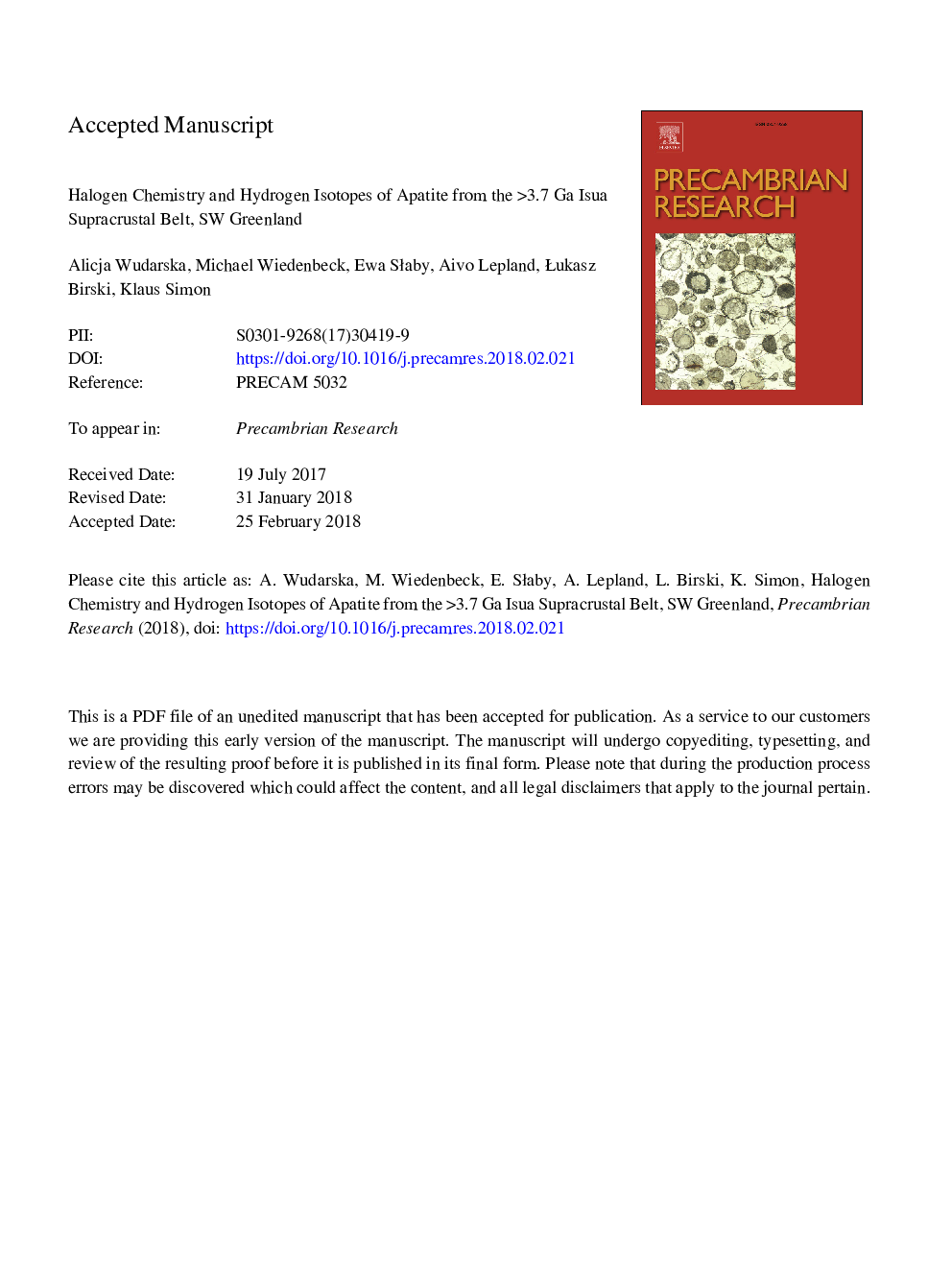| Article ID | Journal | Published Year | Pages | File Type |
|---|---|---|---|---|
| 8912569 | Precambrian Research | 2018 | 47 Pages |
Abstract
The origin and evolution of volatiles, particularly water, in the abiotic early Earth environment have been intensively studied, and this is a topic of high relevance when considering the timing and conditions of life's emergence. Investigation of hydrogen isotopes in the oldest crystals of minerals from the apatite group Ca10(PO4)6(F,Cl,OH)2 should bring new insight to this topic as the D/H ratio of apatite has proved useful for establishing the evolution of volatiles in other solar system bodies. Apatite crystals from metasedimentary and metavolcanic rocks collected from a low-strain domain of the Eoarchean Isua supracrustal belt have been investigated for their D/H signatures using secondary ion mass spectrometry and for major and trace element abundances using EPMA and laser ablation ICP-MS. Apatite crystals from Isua have a broad range in volatile compositions, both within samples from the same lithology (e.g., banded iron formation; BIF) and between different lithologies (BIF, metacarbonate, mafic dyke). Most of the crystals are chlorine-rich, which is in contrast to typical modern sedimentary apatite that is predominantly carbonate fluorapatite. We have used the REE distribution patterns from Isua apatite to distinguish those crystals having sedimentary, metasomatic and magmatic origins. The D/H ratios for all samples were determined to be very low with δDVSMOW values falling within the range from â93 to â56â°. δD values of Isua apatite do not correlate with REE signatures of crystals nor could we relate δD to the host lithologies. We conclude that this geochemical system has been reset during long and multi-phase geologic history, making it difficult, if not impossible, to use hydrogen isotopes for assessment of the primary signatures of the Archean hydrosphere.
Related Topics
Physical Sciences and Engineering
Earth and Planetary Sciences
Geochemistry and Petrology
Authors
Alicja Wudarska, Michael Wiedenbeck, Ewa SÅaby, Aivo Lepland, Åukasz Birski, Klaus Simon,
